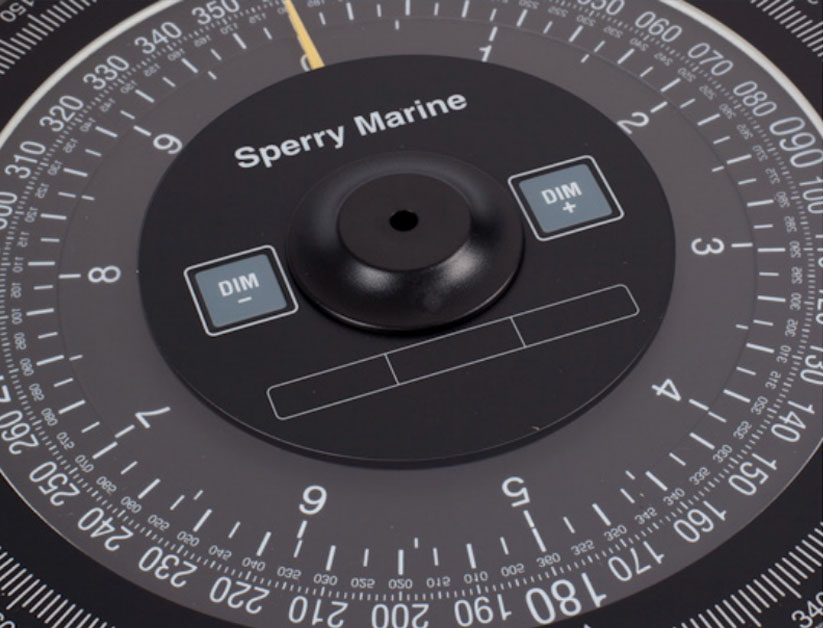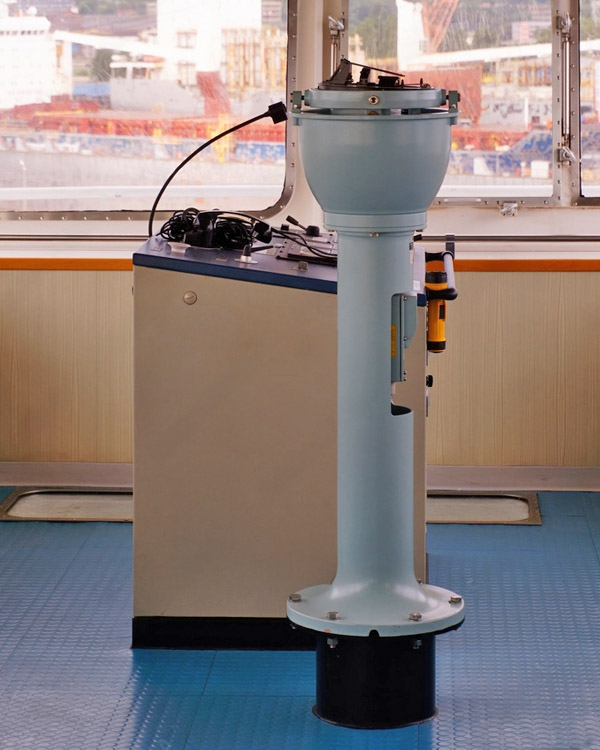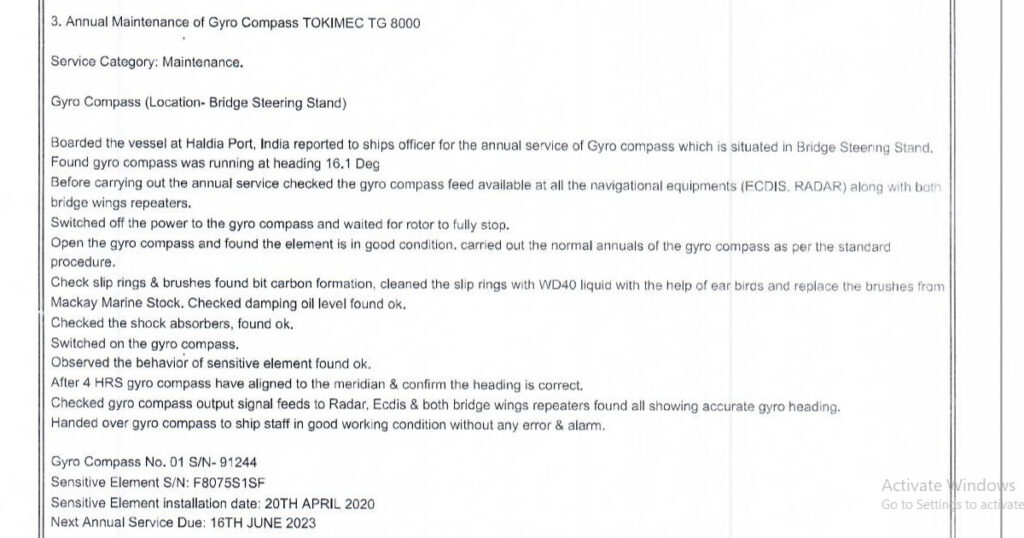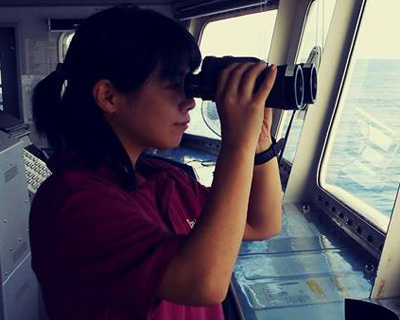I still remember how I got deeply fascinated by the workings of a gyro compass on board.
We were making a sharp alteration, and I pointed out that the compass card was spinning fast. Of course, it was not the compass card spinning but the whole vessel itself!
The compass remains steadily pointing in one direction while the 11,825 gross tonnage ship moves.
That was during my cadetship. I still think that a gyro compass is an incredible tool for seafarers, especially on cross-ocean voyages.
Key Takeaways
- Gyro compasses use gyroscopes and Earth’s rotation to find true north
- Key parts include the gyroscope, compass dial, gimbal rings, synchro systems, master and slave gyro, and the storage battery.
- Limitations include electrical dependency, alignment time, and certain inherent errors.
What is a Gyro Compass?
In marine navigation, a gyro compass is a type of direction-finding equipment that utilizes a fast-rotating disc called a gyroscope to find the true North.
Unlike magnetic compasses that rely on the Earth’s magnetic field, gyro compasses detect true north using gravity and the rotation of the Earth.
A compass dial is connected to the gyro, determining the ship’s heading as the vessel navigates across the seas.
Main Parts and Their Functions
A gyro compass consists of essential components that collectively ensure accurate and reliable directional information.
Here are the main parts and their functions:
Gyroscope – A rapidly spinning disc mounted in a set of gimbal rings and is considered the heart of every gyro compass. It provides stability and maintains its orientation, pointing to the True North.
Compass Dial – Displays the ship’s heading, indicating the direction in which the vessel is moving. It serves as the visual reference point for navigation.
Gimbal Rings – Ring mounts that allow the gyroscope to rotate freely in all axes to maintain its orientation. Usually have inner and outer gimbals.
Synchro Transmitters and Receivers – Facilitate communication between different components of the gyro compass system. They ensure that data on the ship’s heading is accurately transmitted and received.
Master Gyro – The primary gyro unit that aligns with true north and interfaces with the compass dial to provide heading data.
Repeater Gyro – Secondary gyros that replicate the master gyro’s heading through synchro signals. Provide heading info to other locations in the bridge, including the steering flat in the engine room.
Storage Battery – Provides continuous backup power to the gyro compass in case of main power failure, ensuring continuous operation.

How a Gyro Compass Works Onboard
The operation of a gyro compass hinges on the principles of gyroscopic inertia, precession, and the utilization of gimbal rings. These forces ensure the tool’s reliability during navigation.
Gyroscopic Inertia:
The gyro compass relies on a rapidly rotating gyroscope with gyroscopic inertia. This property maintains its stability and rigidity, resisting changes in orientation.
Precession:
As the Earth rotates on its axis, the gyroscope within the compass experiences a phenomenon known as precession. This means the gyroscope reacts to the Earth’s rotational motion by aligning itself in the same direction.
Here’s a simple explanation of precession and gyroscopes:
Gimbal Rings:
Essential in this process are gimbal rings, a set of rotating mounts that allow the gyroscope to pivot freely in response to the Earth’s rotation. These rings ensure the gyroscope maintains its orientation, providing a stable and accurate reference point.
When the ship changes direction, the gyroscope remains pointed the same way, providing an absolute directional reference.
You may think that the compass dial turns whenever your vessel makes a course change, but that dial is actually in a steady position!
The rapidly spinning motion also resists external forces due to its angular momentum.
That’s why even if the ship makes course alterations or gets thrown by heavy waves, it continues to point to the right heading.
Limitations of Gyro Compass
While gyro compasses are highly reliable and widely used onboard merchant ships, they are imperfect and have certain limitations.
Here are some of them to be aware of:
Errors
Since the machine is made up of electronics, several factors can introduce errors to this equipment.
A gyro compass creates what is known as a latitude error if the ship travels at certain latitudes. This can be corrected by manually setting the correct latitude.
A rolling error caused by the ship’s movement also introduces inaccuracies.
Rapid changes in course, speed, and latitude can create temporary deviations before the gyroscope adjusts. This is called a steaming error.
Checking the gyro error in every watch gives us a picture of the compass’ overall accuracy and alerts us to any issues needing attention.

Electrical Dependency
Unlike magnetic compasses, gyroscopes require a constant power supply.
That’s why these types of equipment are hooked up to backup systems or emergency power sources to ensure uninterrupted operation.
Four-hour alignment
If, for some reason, the whole gyro compass shuts down, it takes around four hours for it to align to the meridian and give the correct heading.
From shutdown to maximum spin, the gyroscope needs 30-60 minutes to reach optimal rpm.
It further needs 1 to 3 hours to sense the Earth’s rotation and align with its axis.
Because the earth is also rotating, the compass needs to take this into account before it settles along the meridian.
More complex
The gyro compass is a more complex machine than the magnetic compass and requires special operational needs.
Its annual service maintenance can only be done in port by authorized service technicians when the vessel is still.
Prone to malfunction
Like any other electronics, a gyro compass is prone to malfunction even in the middle of the sea.
Remember that it needs to be still and takes four hours to re-align when restarted, so a simple on-and-off procedure would not be enough to fix it.
Advantages of Gyro Compass for Marine Navigation
Gyro compasses are widely used for navigation on merchant vessels.
Compared to a magnetic compass, this navigational tool offers greater accuracy and reliability:
- They indicate true north rather than magnetic north, unaffected by variation.
- They are free from deviation errors caused by ship magnetism interfering with compass readings.
- They maintain accuracy in rough seas and inclement weather.
- They immediately detect and indicate any malfunction.
- They interface with various navigational systems like radar, ARPA, ECDIS, echo sounder, and autopilot systems.

Gyro Compass Annual Maintenance
Here is a step-by-step procedure on how to maintain a gyro compass by a shore technician who went to one of our ships.
1. Before carrying out the inspection, note the gyro heading.
2. Check the gyro compass feed available to all navigational equipment (ECDIS, RADAR) along with both bridge wings repeaters.
3. Switch off the power to the gyro compass and wait for the rotor to fully stop.
4. Open the gyro compass and inspect it as per the standard manufacturer’s procedures.
5. Check slip rings and brushes, and clean them with WD40 liquid. Brushes may also be replaced. Also, check for the damping oil level.
6. Check the shock absorbers to see if they are okay.
7. Switch on the gyro compass.
8. Observe the behavior of the sensitive elements.
9. After 4 hours, the gyro compass should have aligned to the meridian. Confirm if the heading is correct.
10. Check the output signal feeds to radar, ECDIS, and repeaters if showing an accurate gyro heading. Make sure there are no errors and alarms.
In summary, while gyro compasses are a vital navigation tool, they must be aware of how this complex machine works and their limitations for their effective use on ships.
Because at the end of the day, this equipment is only as good as its users.
May the winds be in your favor.



0 Comments